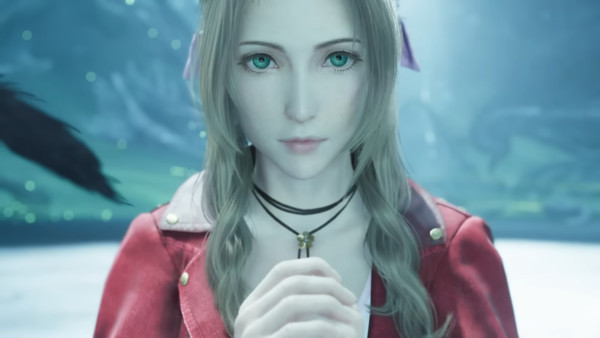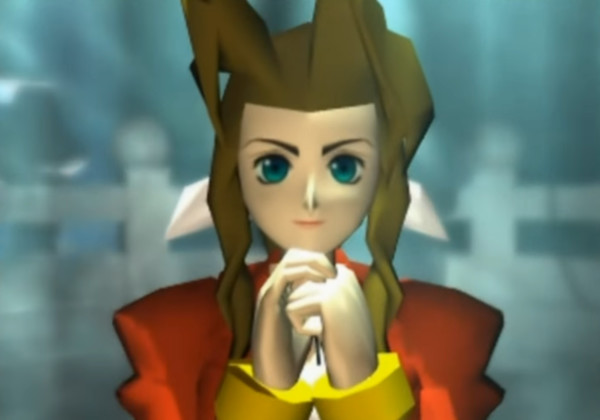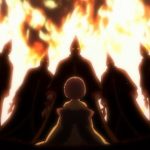Warning: Spoilers ahead! This article will contain spoilers for almost every release related to Final Fantasy VII before its rebirth, including the original game, Crisis Core, Advent Children, FFVII Remake, and even the trailers for Rebirth.
“Have you heard that there’s a chance to stop Sephiroth from killing Aerith?”
It was one of the greatest myths of all time for anyone who enjoyed video games in the 1990s; it was an unavoidable proto-meme that was being spread even by individuals who had never even played a Final Fantasy game. It would be whispered softly between pals while you browsed the books at Blockbuster or the electronics boutique. All around the world, heated arguments would start in school cafeterias and on playgrounds. A decade after the game’s release, fans were still debating whether or not this legend was real in fan forums that are still archived online. The discussions consistently adhered to the same fundamental structure:

Gamer A: “Dude, before you fight Sephiroth, there’s this secret quest in Disc 3 that you can do to revive Aerith**!” It includes everything, including a new conclusion video.
Player B: “Oh my God! I’ve played every single Final Fantasy game countless times, therefore I’m aware that Aerith was a total waste. You’re a big fat joke.
Gamer C: “My cousin’s father in California actually works for GameShark, so he was given early access to the cheat codes that are required to complete the quest.” Because it would have resulted in the game being rated M, Squaresoft was forced to remove the hidden ending for PlayStation. According to my cousin, Aerith completely impales Sephiroth in the covert footage with her staff! It’s quite sharp.
Gamer B: “Wait, seriously? Now, I doubt every truth and institution I’ve ever believed in.” I’ve never heard of anything as amazing as that in my entire life!
A player: “Yeah, dude!”
Player C: “Hey, yeah.”
(**Note: We’re going to continue with the corrected localization, even though everyone in my region would have called her “Aeris” back then.)
The point is, we all responded to Aerith’s death as if FFVII had made us watch a truly horrific murder because it was such a seismic and formative event for the still-developing video game fanbase. For years, all it took to send any fan reeling back through the stages of grief was to show them that scene from the game, with Aerith kneeling in prayer at that temple in the City of the Ancients and an ominous black feather floating down behind her just before Sephiroth descends like some unholy angel to deliver the killing blow. Denial: “It’s not possible!” rage (“You bastard, Sephiroth!”). Bargaining (“You mean I just have to complete the hidden mission? Then she’s ours again, right? Depression (“What is even the point of anything if the uncle from GameShark lied?”). But eventually, we would all have to face Acceptance after decades of crushed hopes and fading myths in our rearview mirrors.
Then the remake of Final Fantasy VII was released.
It would be impossible for one editorial piece to capture the immense legacy and influence of rebuilding Final Fantasy VII, but if you have an afternoon to spare, there are some amazing video essays available. In summary, the crazy guys at Square Enix ultimately let loose the first installment of the intended trilogy of FFVII Remake games in April 2020, following more than two decades of rumors and conjecture. The Final Fantasy VII Remake was a huge hit that allowed both new and old fans to return to the world of Gaia and the industrial dystopia of Midgar—and to be reunited with its familiar heroes and their familiar story—given the state that the COVID pandemic had left the world in at that point. At the time, that was what we all believed.
It’s funny: Back then, I recall making jokes with some of my friends about all the new features that would inevitably be added to the game, since Square Enix was reportedly now determined to spread the plot over three massive role-playing games. “Do you think they’ll work in some kind of reference to that old ‘Save Aerith’ urban legend?” inquired one of us ineluctably. We all chuckled at that, partly because when we were young and gullible, so many of us had believed such a ridiculous thing to be real.
Naturally, there was no way that they would go so far as to actually let us to save Aerith, even if one of the Remake games managed to slip in a tiny joke about the myth. Ultimately, it is only because of her demise that she is able to appeal to the planet’s Lifestream and assist Cloud and the other party members in freeing Gaia from Sephiroth’s Meteor spell. Furthermore, Aerith’s death is iconic, even if we assume that directors Tetsuya Nomura, Naoki Hamaguchi, and Motomu Toriyama intended to alter some of the game’s original events to emphasize the Remake series more—or even just correct some of the story’s shortcomings. Given the history of the Final Fantasy franchise, which boasts one of the most devoted (and, let’s say, “strongly opinionated”) fanbases in the business, it seems unlikely that the most significant plot point in the new Final Fantasy VII would be jeopardized.
At the time, the only more absurd suggestion you could have made would have been that Zack Fair’s death, which is so central to the game’s plot, could be altered in a remake. You know, the catalyst for Cloud’s whole storyline, which is so important to the franchise’s mythology that a whole prequel game was created to examine Zack’s persona and the circumstances behind his untimely demise?
Yes. It turns out that the Final Fantasy VII Remake accomplished the exact goal of reversing Zack’s death. Maybe. Perhaps?
It’s a little difficult.
To cut a very long tale short, “Whispers” are the main focus of the secondary plot of Final Fantasy VII Remake. These spectral arbiters of fate were fashioned by the planet to ensure that everything goes as “supposed to”—that is, as it did in the first Final Fantasy VII. Thus, the Whispers step in to make things happen as they are destined to when they veer too far from the path, such as when Cloud isn’t asked to participate in the attack on the Sector 5 Reactor or when Sephiroth stabs Barret in the chest. However, Cloud and company see various views of what will happen in the future—including Aerith’s death—after engaging with the Whispers. Thus, at the conclusion of the game, they resolve to battle the Whispers and reclaim their own destiny; this decision appears to both erase the past and create an uncertain future (such as the deaths of Zack and Biggs).
Thus, the game’s “Remake” moniker served as both a declaration of the developers’ intentions and an indication of the nature of the game as a product, as well as a statement of intent for the protagonists. That meant that all bets were off. Upon the announcement of Final Fantasy VII Rebirth as the title of the second game in this trilogy of remakes, the question no longer centered on whether Square Enix could, or should, make substantial alterations to what could be the most well-known character death scene in video game history.
To be honest, I’m at a loss for choice. On the one hand, I’ve lived long enough to realize that the narrative of Final Fantasy VII is inexorably related to the feelings evoked by the picture of Aerith knelt in prayer—a sacrifice that must be made in order to save a dying world.
Ten years after the release of Final Fantasy VII, Tetsuya Nomura even directed a whole sequel film, which focused on Cloud’s journey of acceptance of Aerith and Zack’s sacrifice. The film ends with Cloud killing Sephiroth, the resurrected zombie-ghost-memory-vision creature who represents the trauma and guilt that have been weighing Cloud down ever since Aerith died. It’s not as though Nomura or the other leaders of the FFVII Remake project have forgotten the ideas of their own story—Advent Children was just rereleased in theaters a few weeks ago.
That being said, I hope it would be clear that retelling this story in the exact same way as it happened in the past—with Cloud entering and slapping the Masamune out of Sephiroth’s hands before he can skewer Aerith—would be essentially superficial and careless.
However, these games are starting to resemble a strange collection of quasi-sequels rather than being conventional “remakes” of Final Fantasy VII. If nothing else, they are games that are very conscious of their connection to one of the most cherished storylines in the history of video games, and they’ve taken the extremely bold and daring choice to include that self-awareness in the narrative itself.
As a result, the first game—Final Fantasy VII Remake—boldly claims to know exactly how things are meant to proceed while refusing to follow the simple route and capitalize on nostalgia alone. It appears that Final Fantasy VII Rebirth is dedicated to providing us with a retelling of the FFVII plot that is never subservient to its original storyline, but rather constantly converses with it.
Furthermore, the main problem of changing or reversing Aerith’s death’s circumstances may be resolved by using this almost metafictional storytelling technique for the remake trilogy. The makers of Remake and Rebirth are making sure that Aerith’s passing matters and that the decades’ worth of memories that her story created for fans worldwide still carry all of their weight and power in players’ hearts by using the script and design of these games to directly acknowledge just how massive a deviation such a turn could be from the way things are “supposed” to happen.
One could never truly “ruin” the impact of Aerith’s passing because her passing has already had nearly thirty years to radically alter pop culture and the world of video games. Why not finish the story of Aerith’s resurrection? The mythology of her return is as essential to the experience of Final Fantasy VII as her death ever was.
It feels as though these Final Fantasy VII designers have been there right beside us the entire time, mingling with us in hushed whispers and cheeky grins among the shelves of those vintage game stores and on our school playgrounds. eventually, after hearing about our aspirations to preserve Aerith for years, they eventually said, “What if we took that old urban legend and turned it into an entire trilogy of games?”
When I was frantically imparting all of this FFVII history to my wife, she described it as “the ultimate hidden Final Fantasy side-quest.”
Even as it forges ahead with its own distinct identity, I’m not sure if this new tale will be able to live up to the legacy of Final Fantasy VII. But, I can’t express how eager I am to go headfirst into the burning unknown with Cloud and the crew and discover, one way or another, what lies at the center of that ancient city for them all.



